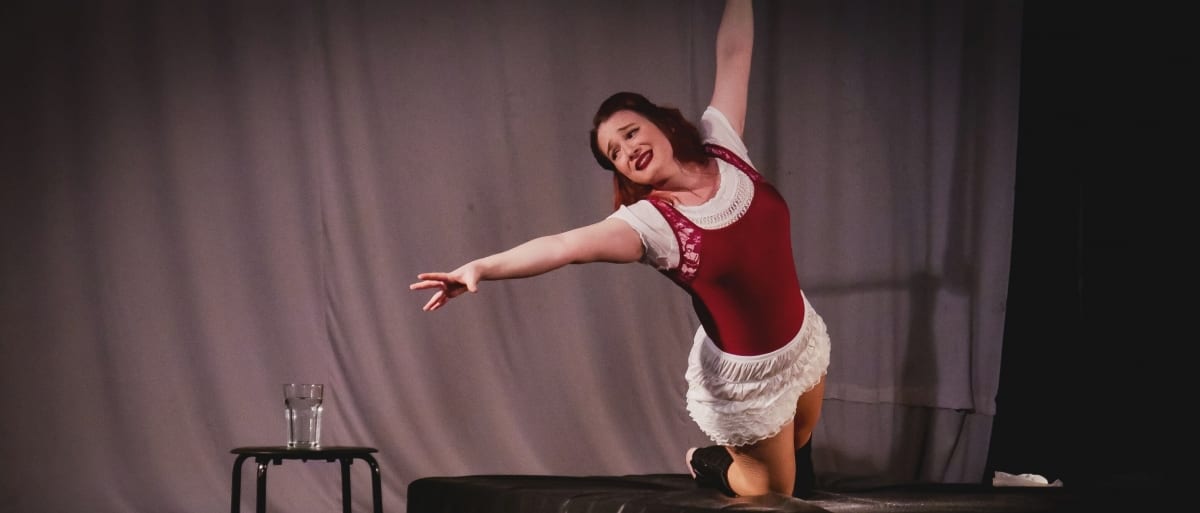Stav Meishar, who devised The Escape Act and performed it at Jacksons Lane Arts Centre, modestly describes the piece as a “work in progress”. It is already, in its current form, an extraordinary work of dramatic story telling. When it is performed in Germany later in the year, in the town where Irene Danner’s family lived, it promises to be even more powerful. In a world that needs to be reminded more than ever of the dangerous consequences of racist poison – and of inflammatory rhetoric – Meishar’s gentle humour and the quiet retelling of the everyday horrors of the holocaust is all the more powerful for its restrained dignity. Using puppetry and circus skills, she tells the extraordinary story of Irene Danner and of the Circus Althoff where she and her family were sheltered from the Nazis through the war. And she intercuts the main story with reminiscences about the experiences of her own family through the terrible years from 1930 to 1945.
Irene Danner was born in 1923 into a Jewish circus family, The Lorchs, and began to train as an acrobat. After the Lorch Circus was driven into bankruptcy in the early days of Nazi persecution of Jewish businesses, teenager Irene managed to gain a role in another circus run by Adolf Althoff, eventually becoming a clown. She persuaded Althoff to take in other members of her family and, though she had no papers, he protected them right through the war years at great risk to himself and his wife. Irene fell in love with one of the other clowns, Peter Bento, and married him after the war. Many other members of her family died in forced labour camps and concentration camps.
Meishar tells this story with enormous wit and charm that somehow makes the horror of the events she is describing even more chilling. She performs sometimes as a traditional narrator, sometimes hanging – somewhat precariously – from a trapeze, and sometimes using puppets – some tiny, some the size of a ventriloquist’s dummy. This device allows her to introduce a whole range of characters into the narrative, and very successfully to vary the pace and tone of the story. Sometimes she comes out of character and talks very movingly of her own family and their experiences both of loss and survival against the odds. This allows her to make the very telling point that concentrating on the “interesting stories” like that of Irene Danner sometimes risks distracting us from acknowledging the horror of the fate of millions of “ordinary” Jews (and Gypsies and Gays) who died in those terrible years.
This is a very special show. Stav Meishar uses her range of performing skills to develop a show that is both engrossing and, under the gentle and often amusing surface, truly terrifying. To tell a holocaust story using this range of dramatic tools provides one ingenious way to lead us to focus on a history about which we need constant reminding; in the exhibition (still being expanded) that Meishar has put together in the theatre foyer it is reinforced by other stories. I also found it helpful to search out the testimony of Irene Danner-Storm on the Yad Vashem website. If and when this performance comes to a space near you, I urge you to go to see it.

